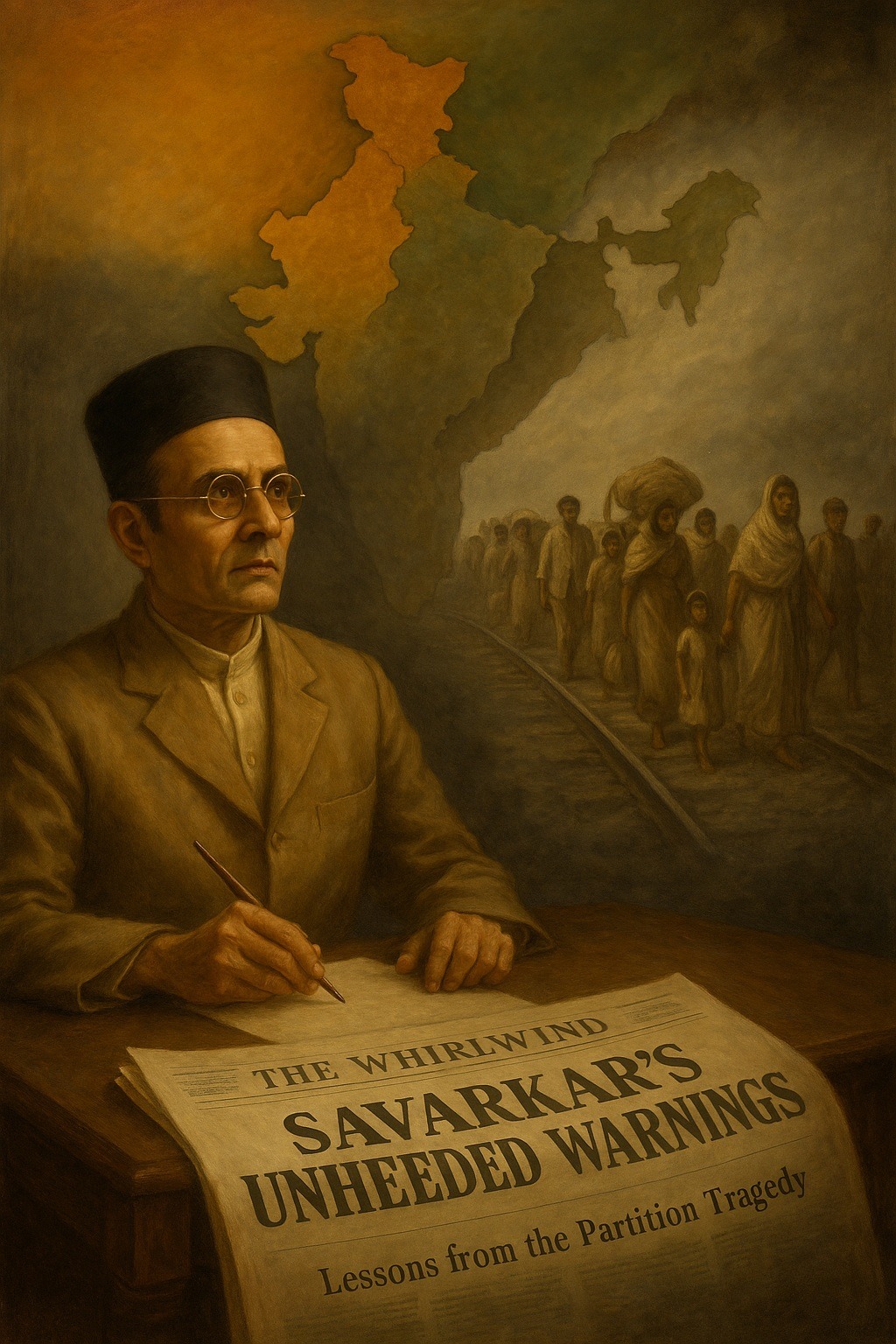Independence Shadowed by Tragedy
The Partition of India in 1947 was more than the birth of two nations — it was one of the largest human tragedies in recorded history. While millions celebrated independence, millions more faced death, displacement, and devastation.
Few foresaw the coming storm as clearly as Vinayak Damodar (Veer) Savarkar. For years, he had warned that communal separatism — particularly the Muslim League’s demand for a separate state — would lead to the vivisection of Bharat.
Savarkar’s Prophetic Warning
As early as the 1930s, Savarkar cautioned that the Lahore Resolution of 1940, calling for a separate Muslim homeland, was a dangerous turning point. To him, it was not a mere political proposal — it was a direct assault on the unity of India.
“A nation divided on religious lines is a nation preparing its own ruin.” — V.D. Savarkar
He argued that concessions to such demands would only embolden separatists, weaken the national fabric, and invite catastrophic violence.
The Spark Before the Fire: Direct Action Day
On 16 August 1946, Savarkar’s fears materialized in Calcutta. Responding to Muhammad Ali Jinnah’s call for “Direct Action,” the Muslim League staged mass demonstrations. What followed was not peaceful protest, but an outbreak of calculated brutality.
- Hindu neighborhoods attacked and set ablaze
- Shops looted and temples desecrated
- Thousands killed in what came to be called the Great Calcutta Killings
For Savarkar, this was not just a riot — it was a grim preview of Partition’s horrors.
Partition: The Largest Forced Migration in History
When independence arrived at midnight on 14–15 August 1947, it was accompanied by the division of British India into India and Pakistan. The hastily drawn Radcliffe Line sliced through provinces, towns, and even family homes.
By the numbers:
- 14–15 million people uprooted
- 1–2 million killed in massacres, starvation, or disease
- Tens of thousands of women abducted, raped, or forced into conversion
- Entire trains of refugees arriving at stations with no survivors
What had once been shared streets and markets turned into killing fields.
The Partition Horror Memorial: Memory and Warning
The Partition Horror Memorial stands today as a solemn tribute to the dead and displaced. It is also a warning — echoing Savarkar’s voice — that appeasing communal separatism carries a terrible price.
Remembering Partition is not only an act of mourning; it is an act of vigilance. It reminds us that the unity of a nation, once broken, is almost impossible to mend without deep scars.
Do you think Savarkar’s warnings about Partition were ignored, misunderstood, or deliberately sidelined? Why? How should India today remember the victims of Partition — through memorials, education, or other means? Do events like Direct Action Day still hold lessons for modern India’s approach to communal harmony? Share your insights in the comments below!
Sources:
Butalia, Urvashi. The Other Side of Silence: Voices from the Partition of India. Durham: Duke University Press, 2000.
Dalrymple, William. The Great Partition: The Great Divide: India and Pakistan. London: Penguin Books, 2015. (Originally published as The Great Partition in the US)
Godbole, Shreeram. Savarkar and His Times. Pune: Sahitya Sanchay, 1966.
Khan, Yasmin. The Great Partition: The Making of India and Pakistan. New Haven: Yale University Press, 2007.
Menon, Ritu, and Kamla Bhasin. Borders & Boundaries: Women in India’s Partition. New Delhi: Kali for Women, 1998.
Talbot, Ian, and Gurharpal Singh. The Partition of India. Cambridge: Cambridge University Press, 2009.
Sampath, Vikram. Savarkar: A Contested Legacy, 1924–1966. New Delhi: Penguin Random House India, 2021.
Savarkar, Vinayak Damodar. Historic Statements. Bombay: Veer Savarkar Prakashan, 1967.
Savarkar, Vinayak Damodar. Hindu Rashtra Darshan. Bombay: Veer Savarkar Prakashan, 1949.


Leave a Reply